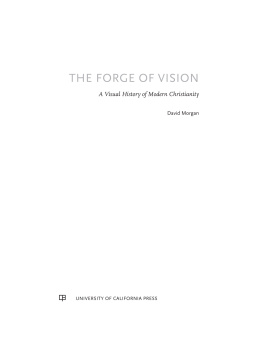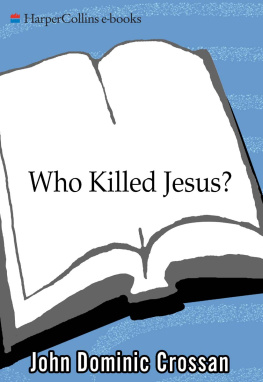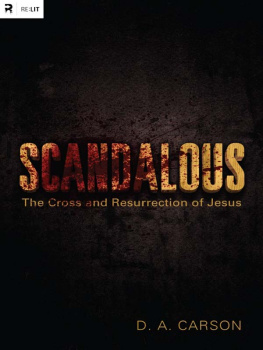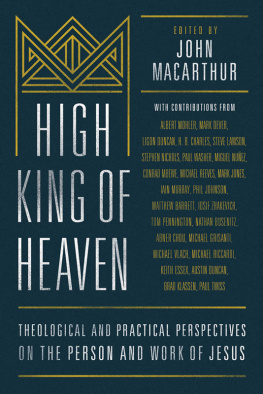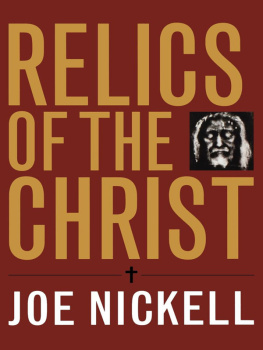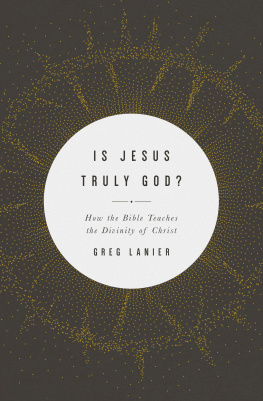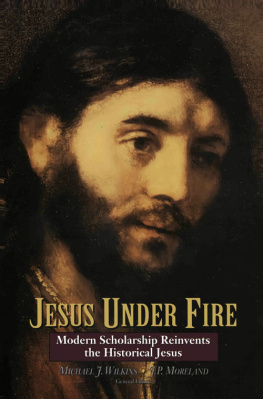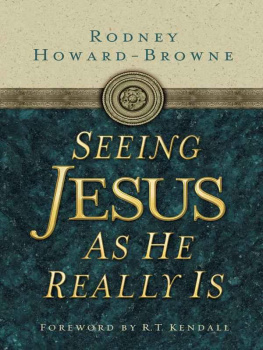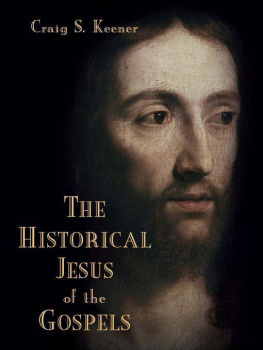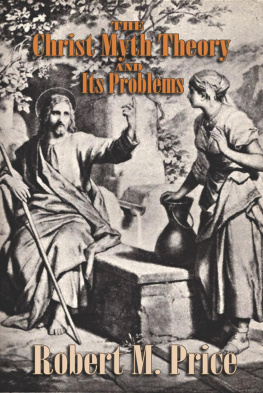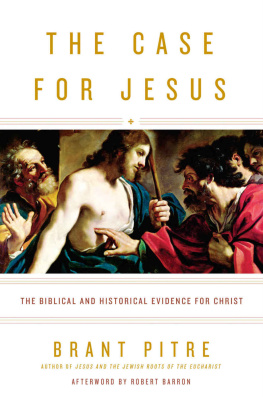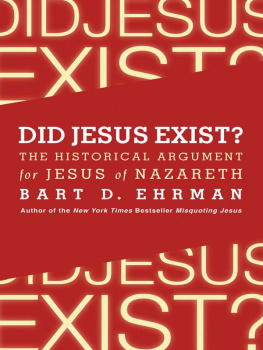Simply Jesus
A New Vision of Who He Was, What He Did, and Why He Matters
N. T. Wright

To the beloved memory of Nicholas Irwin Wright
26 February 192016 March 2011
Contents
J ESUS OF NAZARETH poses a question and a challenge two thousand years after his lifetime. The question is fairly simple: who exactly was he? This includes the questions, What did he think he was up to? What did he do and say, why was he killed, and did he rise from the dead? The challenge is likewise fairly simple: since he called people to follow him, and since people have been trying to do that ever since, what might following him entail? How can we know if we are on the right track?
I have spent much of my life puzzling over these questions and trying, from various angles, to address and answer them. This has been exhilarating as well as challenging. Having grown up in a Christian household, and having experienced the growth and development of my own personal faith from my early years through to adulthood, I have been aware of a vocation which our present culture usually splits into two but which I persist in seeing as a single whole. I have been called to be a historian and theologian, a teacher and writer specializing in the history and thought of early Christianity, and also a pastor within the church. Sometimes I have been able to combine these two elements, the academic and the pastoral; sometimes the jobs to which I have been led have forced me to specialize in one rather than the other, leaving an imbalance which I have then tried to correct. The relevance of this autobiographical remark for the present topic should, I think, be clear: writing about Jesus has never been, for me, a matter simply of neutral historical study (actually, there is no such thing, whatever the topic, but well leave that aside for the moment); the Jesus whom I study historically is the Jesus I worship as part of the threefold unity of the one God. But, likewise, writing about Jesus has never been a matter simply of pastoral and homiletic intent; the Jesus whom I preach is the Jesus who lived and died as a real human being in first-century Palestine. Modern western culture, especially in America, has done its best to keep these two figures, the Jesus of history and the Jesus of faith, from ever meeting. I have done my best to resist this trend, despite the howls of protest from both sides.
This book is entitled Simply Jesus, in conscious succession to an earlier book of mine, Simply Christian. However, there is simplicity and simplicity. Often, when I give a public lecture and then invite questions from the audience, someone will stand up and say, I have a very simple question. Then out comes something like, Who exactly is God? or What was there before creation? or If God is good, why is there evil? As I always say to such people, the question may be simple, but the answer may well not be. In fact, if we try to give a simple answer, we may well oversimplify matters and end up just being quizzical. (When someone asked Augustine what God was doing before creation, he replied that God was making hell for people who ask silly questions.) Simplicity is a great virtue, but oversimplification can actually be a vice, a sign of laziness.
This is, of course, a familiar problem. Suppose I am standing outside my college in St. Andrews and a car pulls up. A simple question, says the driver. How do I get to Glasgow from here? Again, the question is simple, the answer less so. If I simply say, Keep heading west and a bit south, and you cant miss it, I am telling the truth, more or less. The roads are reasonably well signed. But the roads are not straight, and without more help one might easily go wrong. It might be useful to point out that there is a large river in the way, a mile wide at its narrowest point until a long way inland, and that the bridge over the river is sometimes closed because of high winds, but that the alternative route involves going through several small towns and villages and skirting around one or two ranges of hills. The driver doesnt want to know all that, or not at the moment. But unless I draw attention to some of it, I may be oversimplifying, and the driver may resent my simple advice for being too simple by half when, stuck in a village somewhere, he reflects that a little complexity might actually have helped.
I feel a bit like that with the present book. I set out to write a simple book about Jesus. But Jesus was not simple in his own time, and he is not simple now. One might have thought that it would be comparatively easy to take my earlier books, particularly Jesus and the Victory of God and The Challenge of Jesus, and turn them into something quite simple. But I was surprised, in sketching out this book and then writing it, to discover how many new twists and turns I am now aware of that I did not deal with in those earlier works.
It isnt just that scholarship has moved on, though of course it has; this book, though, is not the place to explore those debates. It is, just as much, that I have spent most of the last decade working as a bishop in the Church of England, and, though in some popular imaginings bishops dont have very much to do with Jesus, I found myself thinking, talking, and preaching about Jesus pretty much all the time. In particular, I was of course vitally interested in the way in which Jesus and the struggle to follow him might make a difference in real lives and real communities, from the old mining villages of County Durham, where I lived and worked from 2003 to 2010, right down to the corridors of power in Westminster.
For most of that time I didnt stop to ask how all that ministry, and the life of prayer and sacrament that sustained it, might be changing my view of Jesus. Now, however, when the car pulls up and someone says, A simple question: tell me about Jesus, I find myself wanting to explain about the river, the bridge, the high winds, the small towns, and the hills. I could just say, Just start reading the gospels and try to follow Jesus, and that might do the trick, like telling the traveler just to head west and south and hope for the best. But I decided to answer the simple question by putting together, layer upon layer, in as simple a fashion as I could, what I thought might help someone who really wanted to find the way to Jesus, to Jesus as he really was, and so to find the way through Jesus both to God himself and to a life in which following Jesus would make sense.
The book then falls, more or less, into three parts. Part One consists of the first five chapters, in which I try to explain what the key questions are, why they matter, and why we today find them difficult to answer.
Then, in the central part of the book, Part Two (Chapters 614), I try, as simply as I can, to say what I think Jesuss public career was all about, what he was trying to accomplish, and how he went about it. At this point, to be honest, the material is so rich and dense that I have found myself, like a gardening expert given half an hour to guide a visitor around the Chelsea Flower Show, both spoiled for choice as to what to talk about and anxious about maintaining some shape and direction to the conducted tour. I found it necessary, here and there, to indulge in the cinematic technique of flashbacks, and indeed flash-forwards, taking readers away from Jesus for a moment to remark on other leaders or would-be leaders in Jewish movements of the period. (I didnt want to put those up front, or readers might have become tired, and might have despaired of ever arriving at Jesus himself. By placing them where I have, I trust they illuminate Jesus rather than distract attention from him.)
In this section I ask readers to try various thought experiments. This is absolutely necessary, because first-century Jews thought very differently from the way we do nowand, indeed, from the ways in which other first-century people such as the Greeks and the Romans thought. We have to make a real effort to see things from a first-century Jewish point of view, if we are to understand what Jesus was all about.
Next page

